11 Types of Hawks in Oregon (With Pictures)
It is possible to spot a variety of hawks in Oregon. Nine species of hawks are recognized in the state of Oregon. But along with those nine, you can see an additional two species, which are considered accidental or rare. So, in total, you can spot 11 different species in the state.
Now, if you are a bird watcher or hawk watcher and reside in Oregon, you definitely want to know all about the hawks that are present in the state, right?
Well, this guide has everything that you are looking for!
Are There Hawks in Oregon?
There are many different species of hawks in Oregon. However, the Red-tailed hawk is the most common among them. You will often see these raptors soaring high in the sky. And if you are lucky enough, you can even catch a Red-tailed hawk resting on top of a utility pole.
11 Species of Hawks in Oregon
So, you can catch sight of 11 different hawks in Oregon, where two are considered accidental. However, you cannot tell which hawk you might have spotted if you do not have a fair idea about them. Therefore, let’s not waste any more of your time and get into describing each of the species that are present in Oregon:
1. Red-tailed Hawk (Buteo jamaicensis)
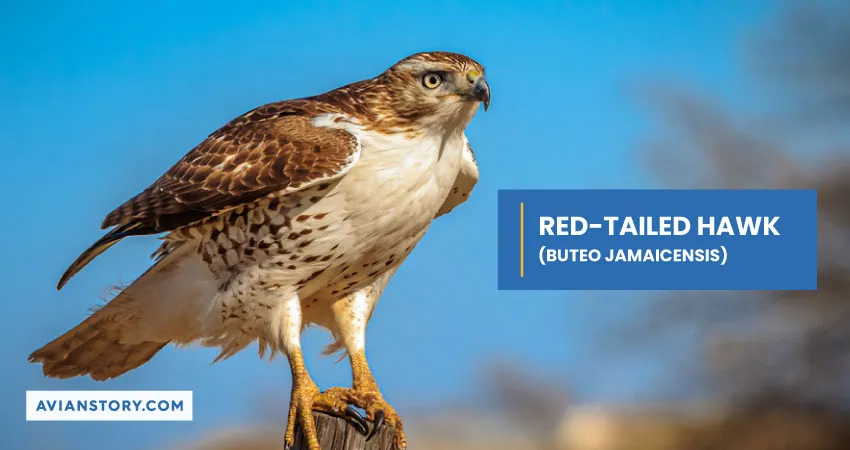
Red-tailed hawks are the most common species in Oregon. You will be able to spot one throughout the year. Most commonly, you will find these hawks flying on top of an open field, telephone wires, or utility poles.
Attributes
As the name states, the Red-tailed hawks have a distinctive wide and short red tail. Although the tails of these birds are short, they have rounded and broad wings. Also, most of these hawks have a brown-colored back and pale underneath. Sometimes, the underparts of these birds will be creamy-colored.
Besides that, most adults have warm cinnamon-red feathers. But if you can not set them apart with their outlook, focus on the sounds they make. These birds are known to make shrill screams, which is pretty hard to miss. In fact, the high-pitched raspy screech sound is heard in most of the movies.
Diet
These birds of prey mostly live on medium-sized mammals. That includes rabbits, voles, mice, rats, and squirrels. You can even spot them having a munch on small to medium-sized reptiles or large-sized birds.
Nesting Preference and Eggs
Red-tailed hawks like to have a commanding view of their environment. For that reason, they prefer the tallest points. You can find the homes of these birds on the edges of the cliffs, tall trees, and sometimes on top of manmade structures.
And when you do stumble upon their nest during the breeding season, you can spot 1 to 4 eggs inside it. The eggs of the Red-tailed are whitish in color. They also have brown spotting on the surface.
2. Northern Harrier (Circus cyaneus)
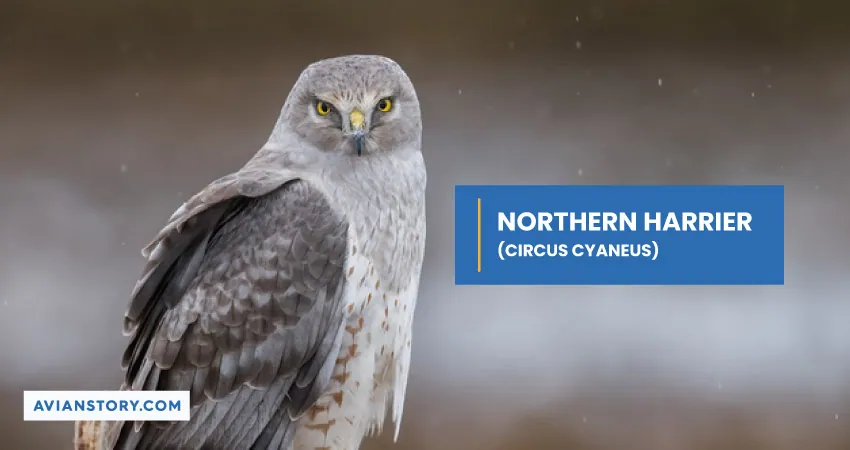
You can get a glimpse of Northern Harriers all across Oregon. However, some portions of Western and Central Oregon might have non-breeding populations of the species.
Attributes
The bodies of the Northern Harriers are slender, and the size is between a crow and a goose. They have long and broad wings, and the tips of their wings generally fly higher than their bodies. Due to that reason, they tend to form a V-shape while flying.
Males have a gray upper part with a white under part, while females have more of a brown coloring on their bodies. You might often catch Norther Harriers with a white rump patch. Also, they have slim and long-sized tails.
Diet
In terms of the diet of Norther Harrier, it is mostly of small birds and small mammals. Often, you can catch them carrying large-sized prey. It should also be noted that their diet usually changes with the change of season.
Nesting Preference and Eggs
Northern Harriers are one of the hawks that nest on the grounds. You can find their nests in dense vegetation, including brushtails, willows, and reeds. In the breeding season, females can lay 4 to 9 eggs. When these eggs are laid, they are pale blue in color. However, with time, they turn pale.
3. Cooper’s Hawk (Accipiter Cooperii)
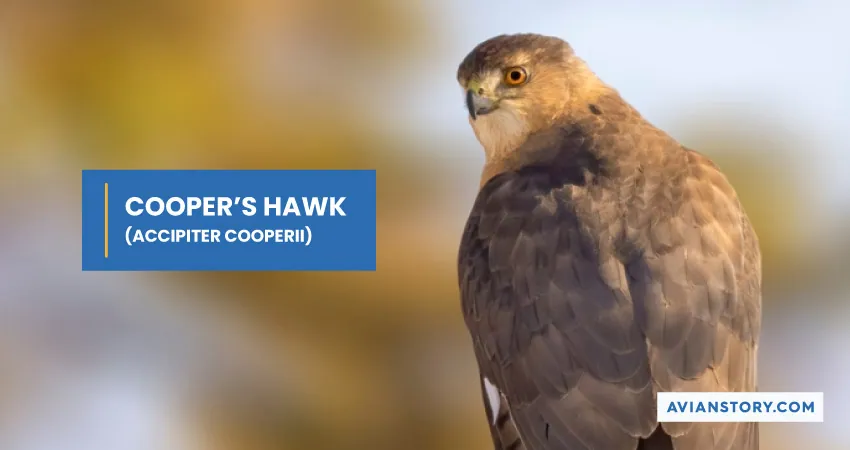
These are the third-most common hawks in Oregon. They are present in the state all year round. However, if you want to spot one, you should be on the lookout for them in the winter season. That is where Cooper’s hawks of other regions migrate to Oregon.
Attributes
The most distinct feature of Cooper’s hawks is the head. They have heads that project well beyond their wings. But that is not all. These birds have a large overall body. Most are pretty similar to crows in terms of size. Also, their heads lean more towards the flatter side, while their tails are round in shape.
Other than that, these birds have dark bands on the tail, red-orange chest, and blue-gray back.
Diet
You can find Cooper’s hawks hanging around backyard feeders. That is where they wait for small birds that peck on the feeders for nuts and seeds. Aside from small birds, they also feast on large-sized birds, such as doves, robins, grouse, jays, and chickens.
Nesting Preference and Eggs
Tall trees are preferred nesting spots for Cooper’s hawks. They often reuse the nest of large-sized birds. And inside the nest, you can find 3 to 5 eggs during the breeding season. Most of Cooper’s eggs are bluish-white in color, but some can be blue.
4. Red-shouldered Hawk (Buteo lineatus)
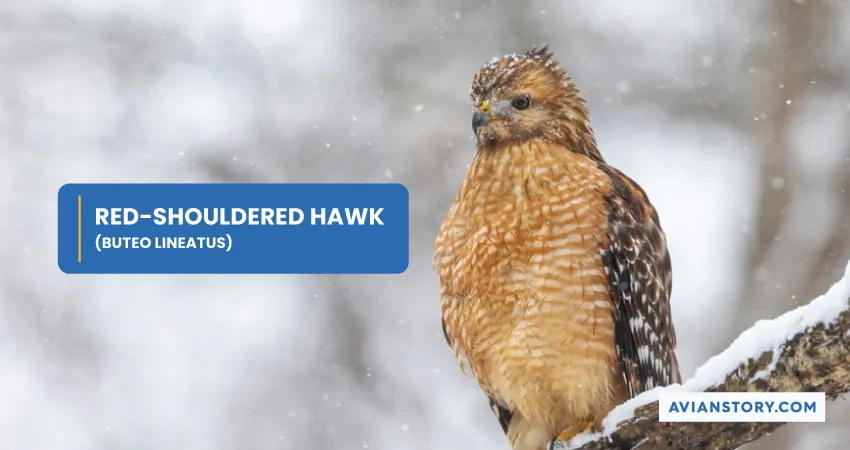
You can catch sight of the Red-shouldered hawks on the west side of Oregon. They are mostly present along the coast. And the good news is that you do not have to struggle too much in recognizing them.
Attributes
These birds of prey have distinctive markings on their body. They have white and dark checkered wings and reddish chest barring. Most are medium in size, making them fall between a swan and a crow.
However, the thing that makes it easier to spot Red-shouldered hawks is the tail and their screams. They have a strongly banded tail. And in terms of their screams, it is a loud cack-cack-cack sound.
Diet
Red-shouldered hawks often hang around water bodies. They prey on small mammals, snakes, and frogs in such areas. You can even find them munching on lizards.
Nesting Preference and Eggs
As their preferred spot to hunt, Red-shouldered hawks like to nest near a water body. A tree near a stream or a pond is the perfect place for them. Generally, they will pick a high point of a deciduous tree and settle there.
In terms of eggs, these hawks can lay anywhere from 3 to 4 bluish to white eggs.
5. Sharp-shinned Hawk (Accipiter striatus)
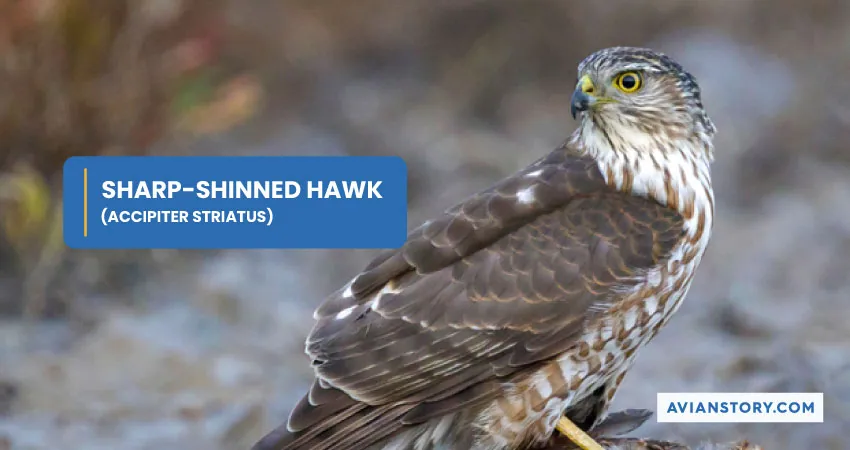
You are most likely to see the Sharp-shinned hawks in Oregon when it is winter. They tend to stay around the state from September to April. And in their breeding season, they fly to the north.
Attributes
Sharp-shinned hawks and Cooper’s hawks are pretty similar in terms of looks. However, Cooper’s hawks are relatively larger than the Sharp-shinned hawks. You should also note that male Sharp-shinned hawks are smaller than females.
Other than that, the sharp-shinned hawks have copper barring on their underparts. Their backs, crown, and nape usually have blue-grey feathers, giving them a hooded look.
One of the unique features of these raptors is their eyes. They are distinctively red.
Diet
Sharpies like to feed on songbirds that hang around the backyard feeders. They also like munching on other small birds.
Nesting Preference and Diet
The nests of Sharp-shinned hawks are primarily found in conifer trees. They choose trees that have a dense cover.
Also, they prefer to nest on tall trees. Their nests are relatively large in size. Usually, it will be 1 to 2 feet in diameter and 4 to 6 inches in depth.
Sharp-shinned hawks are known to lay 4 to 5 eggs that are blue-white in color. Most of their eggs have brown markings on the surface.
6. Rough-legged Hawk (Buteo lagopus)
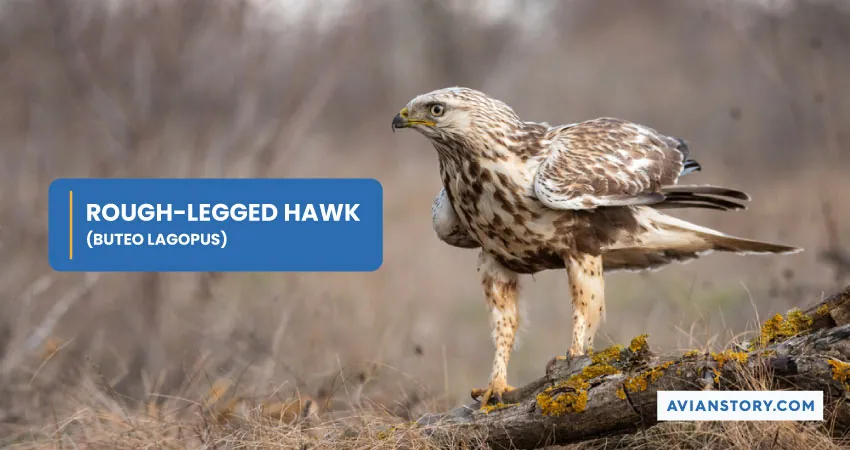
The rough-legged hawks can be spotted in Oregon during the months of winter. You can catch the flying in the skies of the state from November to March. And at the beginning of the summer, they fly back to the arctic regions, which are their breeding grounds.
Attributes
These raptors get their names for their feathered-up legs. These feathers on the legs help the birds to stay warm in the arctic regions. But that is not the only unique trait of these prey birds. They are reasonably large in size and tend to have stocky bodies.
Additionally, Rough-legged hawks have broad and long wings. They are known to have longer tails than most of the other buteos. However, their beaks and feet are relatively small in size.
You will find rough-legged birds in different plumages. That includes dark and light morphs. Also, most of the males have grey-brown uppers and light-morph underparts.
Diet
The diet of Rough-legged hawks mainly consists of voles and lemmings. Along with them, these birds of prey feed on small mammals such as ground squirrels and mice.
Nesting Preference and Eggs
Rough-legged hawks like to nest on treeless tundra, cliffs, uplands, boreal forests, and alpine regions. During the breeding season, you can find 3 to 5 bluish-white eggs inside their nests.
7. Swainson’s Hawk (Buteo swainsoni)

These birds of prey can be seen in Oregon from April to September. Considering that, you can say that the Swainson’s hawks are mostly a summer bird for the state. And during the winter, they set out to the south.
Attributes
Swainson’s hawks have long-sized wings with pointed wingtips. However, the same can not be said for their tails. They have short-sized tails. Most of them usually have grey or brown mottled back and red or brown chests. The bellies of these birds are light in color.
That said, it is easy to spot these hawks when they are flying. You will be able to see a distinct contrast in the black flight feathers. The contrast will be between the lower edges of the tips and wings. There is a noticeable contrast in the upper parts of the wings too.
Diet
The diet of these raptors mostly includes reptiles, rabbits, and rodents. But when they are not breeding, they can switch their diet. During that period, their diet is mostly made up of insects, which includes grasshoppers.
Nesting Preference and Eggs
Swainson’s hawks are pretty picky in terms of choosing nesting spots. That is why it is relatively hard to come across one. Usually, they choose trees that are near open fields or bushes. Sometimes, you can find their nests on top of power poles.
On that note, the nest of these hawks is mostly of sticks and twigs. It can be up to a foot high and two feet wide. And during the breeding seasons, the nests can have 2 to 4 white eggs inside.
8. Ferruginous Hawk (Buteo regalis)
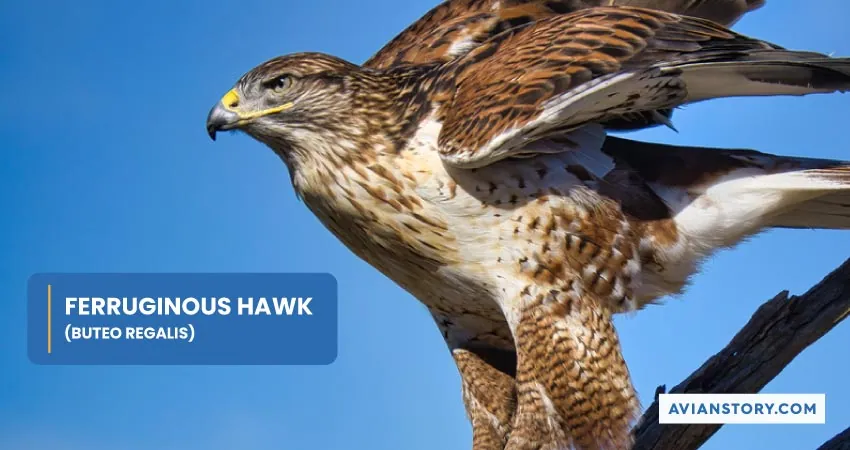
The Ferruginous hawks are only available in the eastern parts of Oregon. And you will mostly come across them during the breeding season. Only a number of these birds are present during the winter in the southern part of Oregon.
Attributes
Ferruginous hawks are the largest North American hawks. They are known for having large-sized heads and relatively long wings. However, the one trait that makes these hawks stand out from the others is the rusty-colored legs and shoulders. This coloration noticeably contrasts with the bright white underparts of the hawk.
Aside from the underparts, the head of these hawks is also white in color. They also have brown spotting on their legs and belly.
Diet
The diet of these hawks consists of different types of animals. It depends on what is available in the region they are staying in. But mostly, they rely on small mammals. You can spot them feasting on cottontail rabbits, jackrabbits, prairie dogs, and ground squirrels.
Nest Preference and Eggs
Ferruginous hawks have reasonably large-sized nests. Their nests can be 3 feet wide and 3 feet in depth. They tend to select low cliffs, large-sized trees, and shrubs for their nesting spots. And females can lay 1 to 8 bluish-white eggs.
9. Northern Goshawk (Accipiter gentilis)
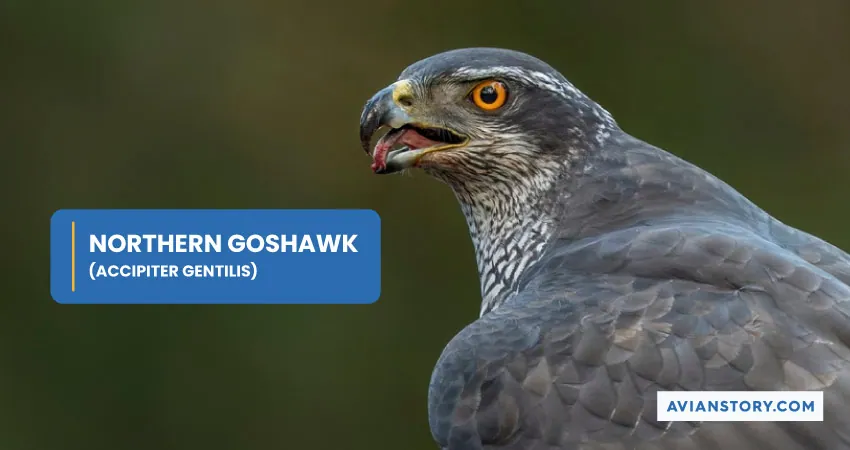
The Northern Goshawks are found all across Oregon. However, they are not available throughout the year. In fact, these raptors are considered to be a rare species in Oregon.
Attributes
Northern Goshawks are considered to be the most impressive species of hawks for their aggressiveness and size. In comparison, they are larger than Cooper’s and Sharp-shinned hawks.
Nonetheless, most of them have gray feathers. They also have long tails and broad wings. But their most unique feature is the white striper over their eyes.
Although, you might not have the chance to appreciate how beautiful their yellow eyes actually are, as you need to get pretty close to them to see that.
Diet
In terms of diet, Northern Goshawks rely on different kinds of food. They adapt to whatever is available around them. But, in most cases, they will rely on insects, mammals, reptiles, and other birds.
Nesting Preference and Eggs
Spotting a nest of Northern Goshawk is not an easy task. They are known to be highly secretive. However, if you are lucky enough, you can spot one high point of large forests.
Regarding the clutch size, these hawks can lay 2 to 4 eggs. Their eggs are blue and tend to be large in size.
10. Broad-winged Hawk (Buteo platypterus)
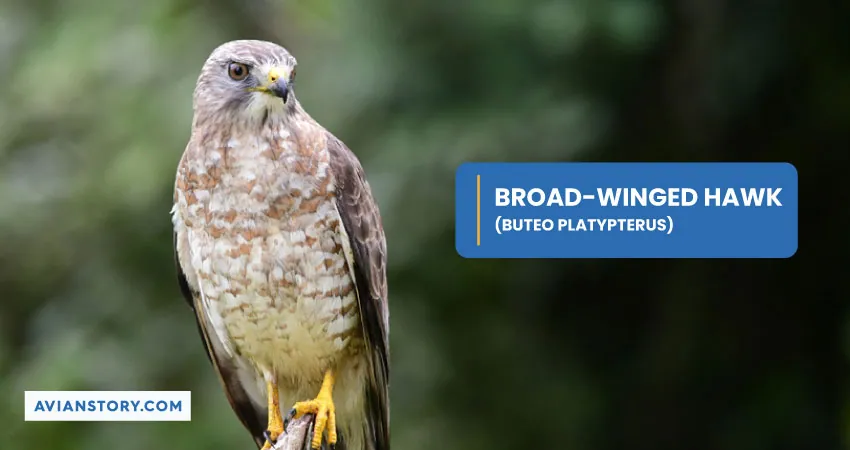
Another rare species of hawk that you can spot in Oregon is the Broad-winged hawk. There have not been many sightings in the state, but you can definitely catch one flying in the sky during the fall season.
Attributes
Broad-winged hawks have stocky and compact bodies. The size of the body is in between a goose and a crow. They have barred breasts, reddish-brown heads, and narrow-banded short tails.
One interesting fact here is that their tails tend to be square in shape.
Diet
These raptors tend to be around the edges of water bodies and woods. There, they hunt for small mammals, young turtles, snakes, and frogs. So, you can say that their diet is not really that diverse.
Nesting Preference and Eggs
When it comes to the nesting site, the Broad-winged hawks generally pick the lower parts of large trees. And in terms of the type of tree, they do not really have much of a preference.
The clutch size of these haws is between 1 to 5 eggs. And their eggs are known to be whitish in color with brown spots.
11. Zone-tailed Hawk (Buteo albonotatus)

To catch sight of a Zone-tailed hawk, you have to be extremely lucky. There is only a record of the hawk being spotted in the state.
The Bird Records Committee caught a glimpse of the bird once in 2018.
Attributes
Zone-tailed hawks are known for the dark coloration of their bodies. In fact, many refer to them as black hawks. However, you will notice some contrast when they are flying. They have white bands across the tail. And there is a barring on the flight feathers.
Regarding their bodies’ size, they sit between a goose and a crow. Some of the adults have two-toned flight feathers, which makes them look pretty similar to turkey vultures.
Diet
These raptors mainly live off birds, mammals, reptiles, and amphibians. When these hawks are hunting, they fly low, close to the ground. And they can hide pretty well when hunting, which makes them capable of catching their prey by surprise.
Nesting Preference and Eggs
The nests of Zone-tailed hawks are generally found in canyon walls, open deserts, and on the large trees that are along the creeks. When it is breeding season, you can find 1 or 2 whitish-blue eggs inside the nests.
| Name | Length | Weight | Wingspan | Commonly Found In | Behavior | Fun Fact |
| Red-tailed Hawk | 17.7 to 25.6 inches | 1.52 to 3.22 pounds | 44.9 to 52.4 inches | Near open fields and on tallest points. | Territorial | The red-tailed hawks are one of the largest Buteo species in North America. |
| Northern Harrier | 16.14 to 19.68 inches | 0.69 to 1.69 pounds | 41 to 46 inches | Open fields and marshes. | Primarily solitary | Male Northern Harriers can have up to five female partners at the same time. |
| Cooper’s Hawk | 14.6 to 17.7 inches | 0.49 to 1.5 pounds | 24.4 to 35.4 inches | Small woodlots, open woodlands, deciduous forests, and forested mountainous regions. | Territorial and aggressive | Females are larger than males. They can be up to 1/3 times larger. |
| Red-shouldered Hawk | 16.9 to 24.0 inches | 1.07 to 1.71 pounds | 37.0 to 43.7 inches | Near wet forests, along a pond or a stream. | Solitary and very territorial | The Red-Shouldered hawks have a peculiar courtship ritual. They often fly together and roll on their backs occasionally. |
| Sharp-Shinned Hawk | 9.4 to 13.4 inches | 0.19 to 0.48 pounds | 16.9 to 22.1 inches | Around backyard feeders, in densely woodend regions, and on top of tall trees. | Mostly solitary but become territorial when breeding | Almost 90 percent of Sharp-shinned hawks’ diet consists of songbirds. |
| Rough-legged Hawk | 18.5 to 20.5 inches | 1.58 to 3.09 pounds | 52.0 to 54.3 inches | Around nestles of tundra and cliffs of low-lying boreal forests | Territorial | Rough-legged hawks can grow 8 to 10 times larger than the smallest bird, the bee hummingbird. |
| Swainson’s Hawk | 18.9 to 22.1 inches | 1.53 to 3.01 pounds | 46 to 54 inches | Open fields, flat grounds, and tall points. | Highly territorial during the breeding season | These birds migrate in swirling flocks. |
| Ferruginous Hawk | 20 to 25 inches | 2 to 5 pounds | 52 to 56 inches | In shrublands and grasslands of the low country. | Solitary | “Ferrum,” which stands for iron, is what makes the bird its name. |
| Northern Goshawk Hawks | 20.9 to 25.2 inches | 1.40 to 3.01 pounds | 40.5 to 46.1 inches | Large forests, mixed forests, or coniferous forests. | Highly territorial | The old English word “goose hawk” is where the species gets its unique name. |
| Broad-winged Hawk | 13.4 to 17.3 inches | 0.58 to 1.24 pounds | 31.9 to 39.4 inches | Mixed deciduous and dense deciduous forests. | Territorial but remain solitary when they are not migrating. | Broad-winged hawks often utilize nests of other birds. |
| Zone-tailed Hawk | 17.7 to 22.1 inches | 1.34 to 1.47 pounds | 46.9 to 55.1 inches | Foothills, cliffs, pine forests, and other areas that have uneven terrains | Aggressive and territorial | These birds are excellent hunters. They can target prey 105 meters from the ground. |
Conclusion
Among all the hawks in Oregon, only nine of them are common. Two of them are considered to be accidental, which are Broad-winged and Zone-tailed hawks. Apart from these two, you will be able to spot the other nine at different times of the year.
Hawks Found in Nearby States of Oregon:
Feature Image Credits: DariaGa, Shutterstock
